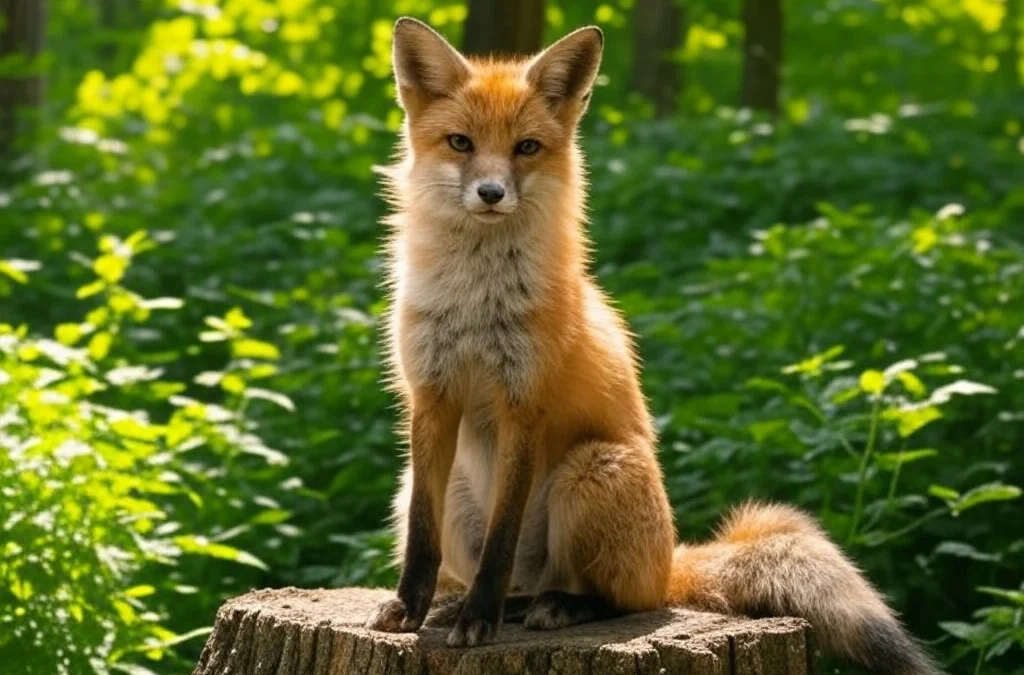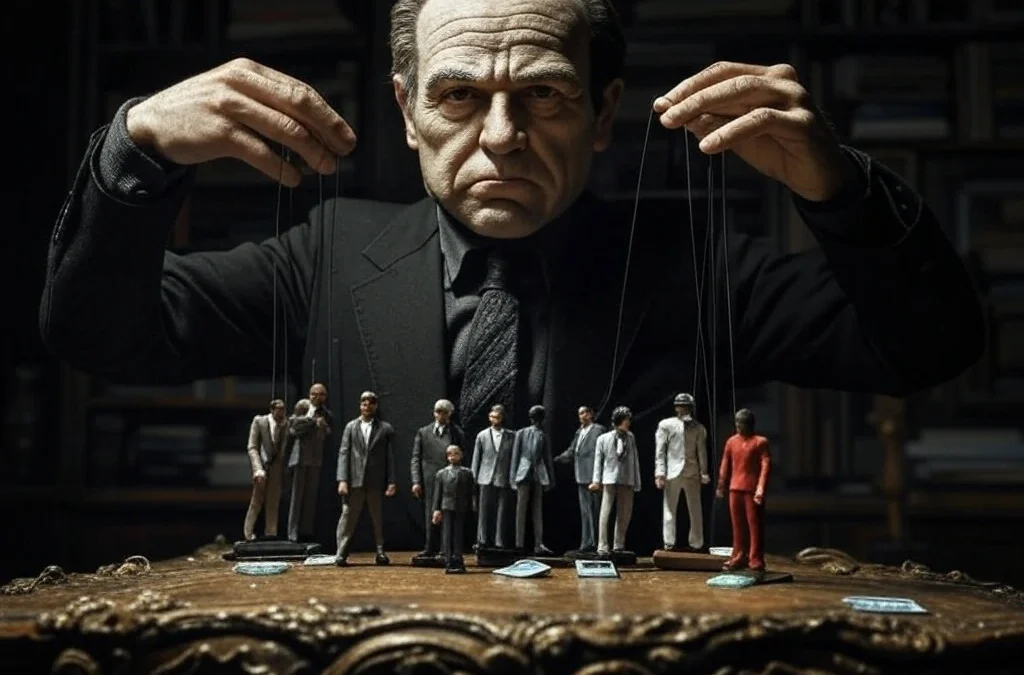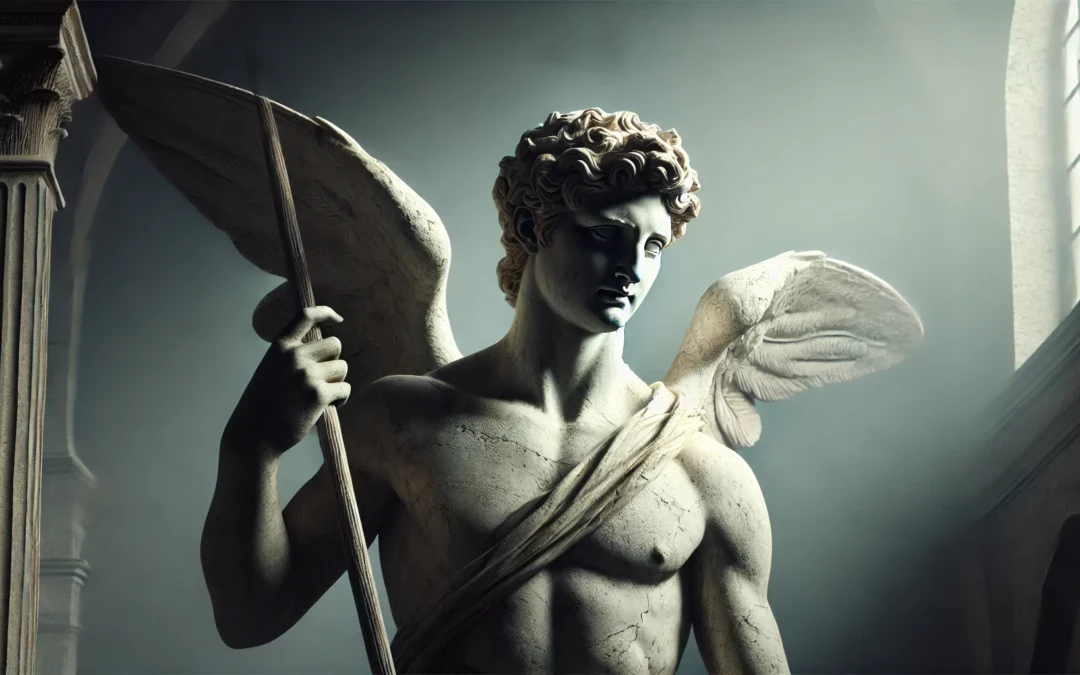Myths have been a part of human culture for thousands of years. They are stories passed down through generations, often explaining the mysteries of life, nature, or human behavior. Every culture has its own myths, shaping the way people see the world and influencing traditions, beliefs, and even modern storytelling.
But what exactly is a myth? Many people use the word “myth” to describe something that isn’t true, but myths are more than just false stories. They often hold deep meaning for the societies that create them. Some myths explain how the world was created, others teach moral lessons, and some are filled with heroic adventures.
In this article, we will explore 100 of the most famous myths from around the world. You will learn what myths are, why they exist, and how they continue to shape our lives today. We will also look at different types of myths and uncover some common myths that people still believe.
Whether you are curious about Greek gods, Norse legends, ancient folklore, or modern myths, this guide will give you a clear and engaging overview. Let’s begin by understanding what a myth really is and why these stories have stood the test of time.
What Is a Myth?
A myth is a traditional story that explains natural events, human behavior, or cultural beliefs. Myths are often tied to religion, spirituality, or ancient traditions, and they usually involve gods, supernatural beings, or heroic figures. These stories have been passed down through generations, shaping the way people understand the world and their place in it.
Unlike simple fictional tales, myths were once believed to be true by the cultures that created them. They served as early explanations for the mysteries of life, offering reasons for things like the changing seasons, the origins of the universe, or the existence of good and evil. Many myths also reflect the values and beliefs of the society that tells them, making them an essential part of cultural history.
Throughout history, myths have influenced art, literature, and even modern entertainment. From Greek mythology with Zeus and Athena to Norse legends of Thor and Odin, myths continue to shape storytelling and inspire new generations.
Types of Myths
- Creation Myths – Stories about how the world began.
- Hero Myths – Tales of legendary figures like Hercules or King Arthur.
- Moral Myths – Stories with lessons about right and wrong.
- Supernatural Myths – Myths about gods, spirits, and mystical beings.
- Cultural Myths – Beliefs that shape traditions and societies.
100 Famous Myths from Around the World
Myths have been told for centuries, shaping cultures and influencing traditions. Some explain the origins of the world, while others tell stories of gods, heroes, and supernatural beings. Below is a list of 100 of the most famous myths from around the world, each with a short description to help you understand what the myth is about.
81. The Legend of Romulus and Remus (Roman Mythology)
Romulus and Remus were twin brothers raised by a she-wolf after being abandoned as infants. According to Roman mythology, they grew up to found the city of Rome. However, Romulus later killed Remus in a dispute, making himself the sole ruler and giving the city its name. This myth explains the legendary origins of Rome and its foundation as a powerful empire.
82. Quetzalcoatl, the Feathered Serpent (Aztec Mythology)
Quetzalcoatl, the Aztec feathered serpent god, represents wisdom, wind, and creation. He taught humans science, agriculture, and art. A prophecy foretold his return, influencing the fall of the Aztec Empire when some mistook Hernán Cortés for him.
83. The Tale of the Dullahan (Headless Horseman of Ireland)
The Dullahan is a terrifying figure in Irish folklore. This headless rider, often carrying his own severed head, is said to appear at night to foretell death. When he stops riding, a person is doomed to die. His whip, made of a human spine, adds to his eerie presence. This myth has inspired similar figures in other cultures, including the Headless Horseman of Sleepy Hollow.
84. The Black Shuck (England’s Hellhound)
The Black Shuck is a ghostly black dog said to haunt the countryside of East Anglia, England. Descriptions vary, but it is often depicted with glowing red or green eyes. Seeing this creature is believed to be an omen of death. Some accounts say it protects travelers, while others claim it brings misfortune. The legend has influenced modern depictions of supernatural dogs, including the Grim in Harry Potter.
85. The Myth of the Man in the Moon (Global)
Many cultures have stories about the “Man in the Moon.” Some say he was a man banished to the moon as punishment, while others believe he is a guardian watching over Earth. In Norse mythology, he is said to be a boy named Máni, who was captured by the gods. In Chinese legend, the moon is home to the goddess Chang’e. This myth is one of the oldest, reflecting humanity’s fascination with the night sky.
86. The Story of the Boogeyman (Universal Fear)
The Boogeyman is a mythical creature used by parents around the world to scare children into behaving. While the exact description changes by culture, the Boogeyman is typically a dark, shadowy figure that hides in closets or under beds, waiting to snatch disobedient children. Though fictional, the myth plays on universal childhood fears of the dark and the unknown.
87. The Mokele-Mbembe (Africa’s Dinosaur Myth)
The Mokele-Mbembe is a legendary creature believed to inhabit the Congo River Basin. Often described as a living dinosaur similar to a brontosaurus, this myth has fascinated explorers and cryptozoologists. Some claim to have seen the creature, but no scientific evidence supports its existence. It remains one of Africa’s most intriguing cryptid myths.
88. The Baba Yaga (Slavic Folklore)
Baba Yaga is a fearsome witch from Slavic mythology who lives in a hut that stands on chicken legs. She is known for both helping and harming those who seek her out. In some stories, she tests heroes with difficult challenges, rewarding the clever and punishing the foolish. She represents the unpredictable nature of fate and wisdom in Slavic folklore.
89. The Trickster Raven (Pacific Northwest Mythology)
The raven is a key figure in Native American myths, especially among tribes of the Pacific Northwest. It is often depicted as a trickster who steals light for humanity, bringing the sun, moon, and stars into the world. The raven is also known for outsmarting other beings, showing that intelligence and wit can overcome brute strength.
90. The Myth of the Werewolf (Global)
The werewolf myth exists in many cultures, often describing a person cursed or infected to transform into a wolf during a full moon. In medieval Europe, werewolves were feared as monstrous beings, often linked to witchcraft. Some legends say they can only be killed with silver. The myth has evolved into popular culture through books, movies, and TV shows.
91. The Flying Dutchman (The Ghost Ship)
The Flying Dutchman is a ghost ship doomed to sail the seas forever. The legend originates from the 17th century, telling of a captain who defied the gods and was cursed to wander the oceans for eternity. Sailors claim to have seen the phantom ship appearing in stormy waters. The myth has inspired many books, movies, and maritime legends.
92. The Changelings (European Mythology)
According to European folklore, changelings were fairy children left in place of human babies. The fairies would steal a human child and replace it with one of their own, often sickly or strange-looking. Parents who suspected their child was a changeling performed tests to expose the trick, sometimes leading to tragic consequences. This myth reflected fears of unexplained illnesses and developmental disorders in children.
93. The Legend of Maui (Polynesian Mythology)
Maui is a trickster and cultural hero in Polynesian mythology. He is known for using his magical fishhook to slow the sun, giving people longer daylight hours. He also pulled up islands from the ocean, creating the Pacific archipelagos. His cleverness and courage make him one of the most celebrated figures in Polynesian lore, famously adapted in Disney’s Moana.
94. Sedna, the Inuit Sea Goddess (Arctic Mythology)
Sedna is the Inuit goddess of the sea and marine animals. Betrayed by her father, she was thrown into the ocean, where her fingers were cut off, transforming into sea creatures. She sank to the ocean floor and became the ruler of the underworld. Inuit hunters must honor her to receive the ocean’s bounty.
95. The Myth of the Man-Eating Tree (South American Myth)
This legend tells of a tree deep in the jungles of South America that can capture and consume living creatures. The tree is said to have long, tentacle-like branches that ensnare victims, draining them of life. Though no real evidence exists, stories of deadly plants persist in folklore, feeding fears of nature’s hidden dangers.
96. The Skinwalkers (Navajo Mythology)
Skinwalkers are powerful witches in Navajo culture who can transform into animals. Unlike regular shape-shifters, skinwalkers are said to use dark magic, causing harm to people. They are feared in Navajo tradition, and speaking about them is considered dangerous. The legend remains one of the most mysterious and terrifying aspects of Native American mythology.
97. The Curse of the Pharaohs (Egyptian Myth)
This myth warns that anyone who disturbs the tombs of ancient Egyptian pharaohs will suffer a terrible curse. The legend gained worldwide attention after the discovery of King Tutankhamun’s tomb in 1922, when several members of the excavation team died under mysterious circumstances. While most deaths had scientific explanations, the myth continues to intrigue people.
98. The Myth of the Yeti (Himalayan Legend)
The Yeti, or “Abominable Snowman,” is a giant, ape-like creature said to live in the Himalayas. Many explorers and mountaineers have reported seeing large footprints in the snow, but no concrete evidence has been found. Some believe the Yeti is a real animal, while others think it is purely a myth passed down through generations.
99. The Holy Grail (Christian and Arthurian Mythology)
The Holy Grail is a sacred object, often described as the cup Jesus used at the Last Supper. In Arthurian legend, knights searched for the Grail, believing it had miraculous powers. The myth symbolizes the quest for divine truth and has inspired countless stories in literature and film.
100. The Aisha Qandisha Myth (Amazigh Folklore)
Aisha Qandisha is a legendary spirit in Amazigh and Moroccan folklore, often described as a seductive yet terrifying jinn. She is said to appear as a beautiful woman with the feet of a goat or camel, luring men to their doom. Stories about her vary—some portray her as a vengeful spirit punishing the wicked, while others see her as a protector of women. Her myth serves as both a cautionary tale and a reflection of the supernatural elements present in Amazigh traditions.
Why Do People Create Myths?
Myths have been a part of human culture for thousands of years. Long before science could explain natural events, people relied on stories to make sense of the world around them. But myths do more than just explain the unknown—they serve several important purposes in society.
1. Explaining the Unknown
Before modern science, people didn’t understand why the sun rose, why storms happened, or where humans came from. Myths provided answers to these mysteries. For example, the Greek myth of Helios described the sun as a fiery chariot pulled across the sky, while Norse mythology explained thunder as the sound of Thor swinging his hammer.
2. Teaching Moral Lessons
Many myths include lessons about good and bad behavior. They warn against greed, dishonesty, or arrogance while praising courage, wisdom, and kindness. For example, the Greek myth of Icarus teaches the danger of recklessness, while Aesop’s fables—which are part of folklore—share simple life lessons through storytelling.
3. Preserving Culture and Identity
Myths are a big part of cultural identity. They connect people to their ancestors and traditions, giving them a shared sense of history. The myths of Indigenous peoples, for example, help preserve their values and beliefs, passing them down through storytelling.
4. Entertainment and Inspiration
Beyond their deeper meanings, myths have always been a source of entertainment. They tell exciting stories of gods, warriors, and magical creatures. Even today, ancient myths inspire books, movies, and TV shows—think of Thor in Marvel movies or the Percy Jackson series, which is based on Greek mythology.
Myths vs. Legends vs. Folklore
People often mix up myths, legends, and folklore, but they are not the same. Here’s how they differ:
- Myths – Stories about gods, supernatural beings, or the origins of the world. These were once believed to be true. (Example: Zeus and Mount Olympus, the creation myth of the Aztecs).
- Legends – Stories based on real people or events, but often exaggerated over time. (Example: King Arthur, Robin Hood, the tale of Atlantis).
- Folklore – A collection of traditional stories, customs, and superstitions passed down through generations. These often include fairy tales and urban legends. (Example: Cinderella, Paul Bunyan, the Loch Ness Monster).
Read also: Top 30 Symbolic Archetypes Examples & Their Meaning
How Myths Influence Our World Today
Even though many ancient myths were created centuries ago, they still influence modern culture in many ways. From books and movies to religious beliefs and even psychology, myths continue to shape the way people think and see the world.
1. Myths in Literature and Movies
Myths have inspired countless books, movies, and TV shows. Stories about gods, heroes, and magical creatures remain popular because they captivate audiences with timeless themes of good vs. evil, bravery, and destiny.
- Greek mythology is the foundation of many modern stories, like Percy Jackson & The Olympians, where ancient gods exist in today’s world.
- Marvel’s Thor is directly inspired by Norse mythology, turning an old legend into a modern superhero.
- Disney movies like Hercules and Moana bring myths to younger generations by retelling old stories in new ways.
Myths That Shaped Religious and Spiritual Beliefs
Many religious and spiritual beliefs are deeply connected to myths. Creation myths, for example, exist in nearly every culture, from Genesis in the Bible to the Hindu story of Brahma creating the world. These myths help explain the origins of life and the universe, giving meaning to human existence.
Even outside of religion, myths influence personal beliefs. Many people follow superstitions, which often come from old myths. For example, some believe breaking a mirror brings seven years of bad luck, a myth that dates back to ancient Rome.
Myths in Psychology and Everyday Thinking
Psychologists have studied how myths shape human thinking. Some common myths influence how people see themselves and the world, even when they are not true.
- The myth of natural talent – Some people believe that skills like intelligence or creativity are something you’re born with, but research shows that effort and practice are just as important.
- The myth of happiness – Many people think that wealth or success automatically leads to happiness, but studies show that personal relationships and mindset play a bigger role.
Because myths are so deeply rooted in culture, they continue to influence modern life, sometimes without people realizing it.
Common Myths People Still Believe Today
Even in the age of science and technology, many myths still circulate as facts. Some are based on misunderstandings, while others come from old beliefs that have never been questioned. Here are a few of the most common myths that people still believe:
1. Myth: Bulls Hate the Color Red
Truth: Bulls are actually colorblind to red. The reason they charge at a matador’s cape is because of the movement, not the color.
2. Myth: We Only Use 10% of Our Brain
Truth: Brain scans show that we use all parts of our brain, just not all at the same time. This myth has been repeated in movies, but it’s not scientifically true.
3. Myth: Goldfish Have a 3-Second Memory
Truth: Goldfish actually have a memory span of months and can recognize their owners.
4. Myth: Lightning Never Strikes the Same Place Twice
Truth: Lightning can and does strike the same place multiple times. In fact, some tall buildings, like the Empire State Building, get hit by lightning dozens of times a year.
Believing in myths like these is harmless most of the time, but some myths can lead to real misunderstandings about science and history. That’s why it’s important to question what we hear and check the facts.
How to Recognize a Myth
With so many stories passed down over time, it’s not always easy to tell which ones are myths and which ones are based on real events. Some myths feel so familiar that people accept them as facts without questioning them. But there are ways to spot a myth and think more critically about the stories we hear.
1. Signs That a Story Is a Myth
- No real evidence – Many myths are based on belief rather than proof.
- Simple explanations for big questions – Myths often give easy answers to things we don’t fully understand.
- Supernatural elements – Gods, magical creatures, and impossible events are common in myths.
- Multiple versions of the story – If a story has many different versions across cultures, it’s likely a myth.
2. Why People Still Believe Myths
Even when myths are proven false, they continue to spread. This happens for many reasons:
- Tradition – Myths are passed down through families and cultures for generations.
- Excitement – Some myths make great stories, so people keep sharing them.
- Confirmation bias – People tend to believe things that match what they already think is true.
- Lack of information – Myths often started before science could explain things properly.
3. How Myths Get Mixed Up with Facts
- Exaggeration over time – A real event or person can turn into a legendary story. (Example: The lost city of Atlantis may have been based on real ancient ruins.)
- Popular culture influence – Movies, books, and TV shows can make myths seem real. (Example: Vikings did not wear horned helmets, but many people believe they did.)
- Old beliefs carried into modern times – Some myths began long ago but are still repeated today, even when there’s proof they’re not true.
People have always told stories to explain the world, and myths are a part of that tradition. They can be entertaining, meaningful, and even teach important lessons, but it’s always good to question them and look for the truth.
The Lasting Influence of Myths
Myths have shaped cultures for thousands of years. They explain the unknown, inspire great stories, and keep traditions alive. Some myths were created to teach lessons, while others were meant to entertain or make sense of natural events.
Even today, myths continue to influence books, movies, and beliefs. Some myths still exist because they are fun to believe, while others remain because they have never been questioned. But knowing the difference between myths and facts helps us think more clearly and make better decisions.
Exploring myths can be exciting and eye-opening. They remind us of how people once saw the world and how storytelling connects us all. Whether we believe in them or not, myths will always be a part of human history.
The Most Popular on BitGlint

40 Social Dilemma Examples in the World & Real Life
Social dilemmas are everywhere. They shape the choices we make at work, in our communities, and even on a global...

30 Favor Examples & Definition
Doing a favor means helping someone without expecting anything in return. It’s an act of kindness that can strengthen...

30 Naivety Examples & Definition
Naivety is something most people experience at some point in their lives. It often starts in childhood, but for some,...

20 Chronology Examples & Meaning
Chronology is something we use more than we realize. It shows up in conversations, in how we remember the past, and in...

30 Wishful Thinking Examples & Meaning
Wishful thinking is something we all do at some point. You hope things will turn out fine—even if there’s no real...

20 Examples of Gravity & What Gravity Really Is
Gravity is one of the most important forces in the universe, but many people don’t fully understand what it really is...

20 Examples of Secondary Consumers in the Food Chain
Secondary consumers are animals that eat other animals—usually herbivores that feed on plants. They’re an important...
Get Inspired with BitGlint
The Latest
30 Flow State Examples & Definition
Most people have felt it at some point — that rare moment when everything just clicks. You're working, moving, or thinking, and suddenly it's like the rest of the world fades out. You're focused, clear, and everything you're doing feels smooth and natural. That’s...

30 Cynicism Examples in Everyday Life & Definition
Cynicism is something most people have seen, heard, or even felt - but few stop to really think about what it means. It shows up in jokes, in conversations, and in quiet thoughts we don’t always say out loud. Some people wear it like armor. Others see it as honesty....
50 Examples of Square Things
Square things are part of everyday life, even if we don’t always think about them. From objects we use at home to tools, packaging, and design elements we see out in the world, the square shape is everywhere. It’s simple, balanced, and practical — which is exactly why...
30 Hidden Meaning Examples That Will Surprise You
Have you ever noticed that some logos, movies, or even songs seem to have more to them than meets the eye? It's like discovering a secret message or an inside joke hidden in plain sight. This kind of hidden meaning is everywhere, and once you start noticing it, you...

